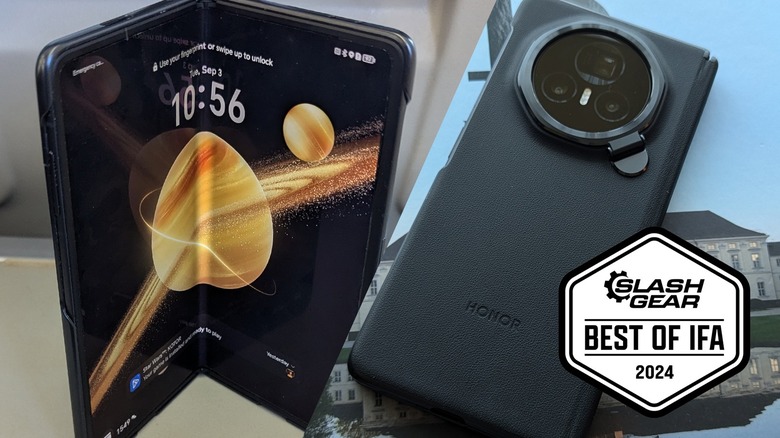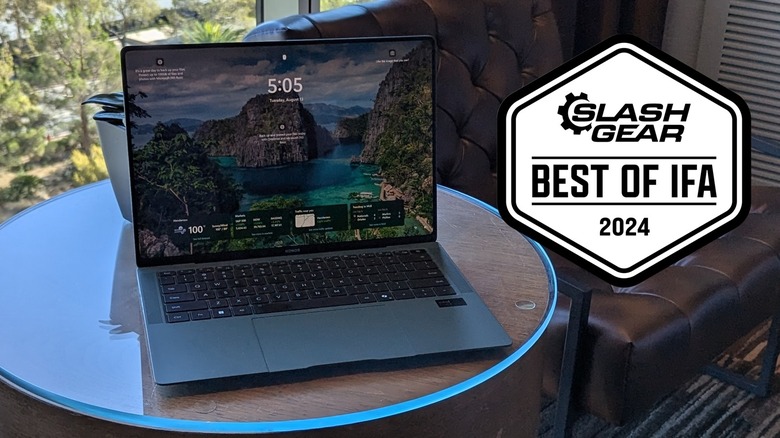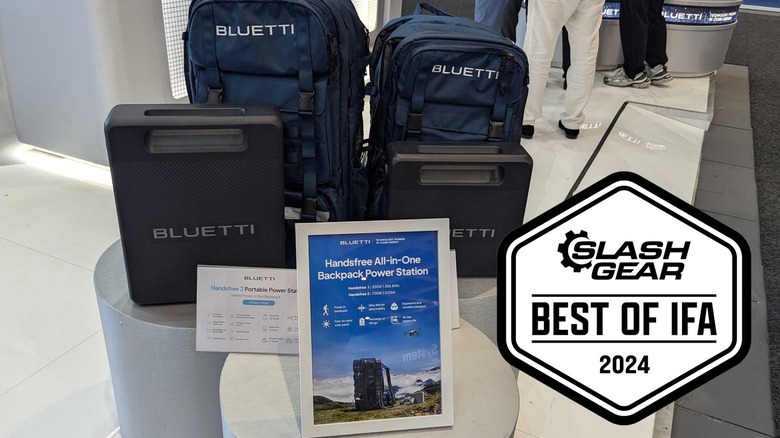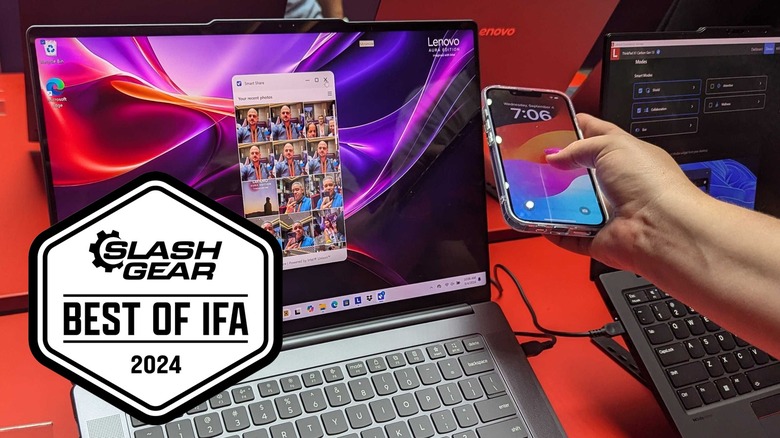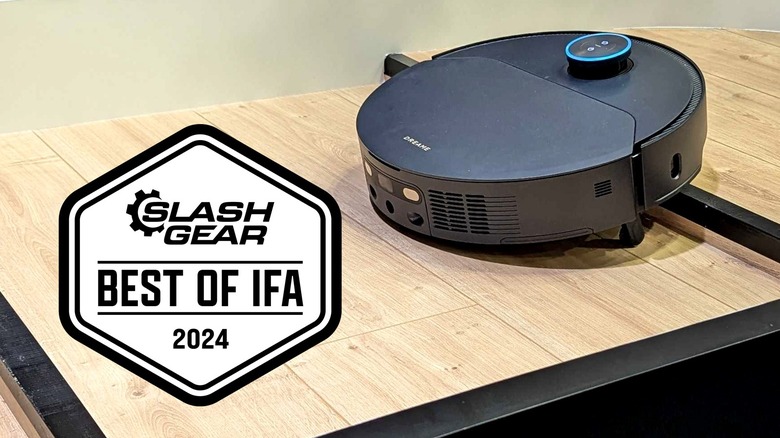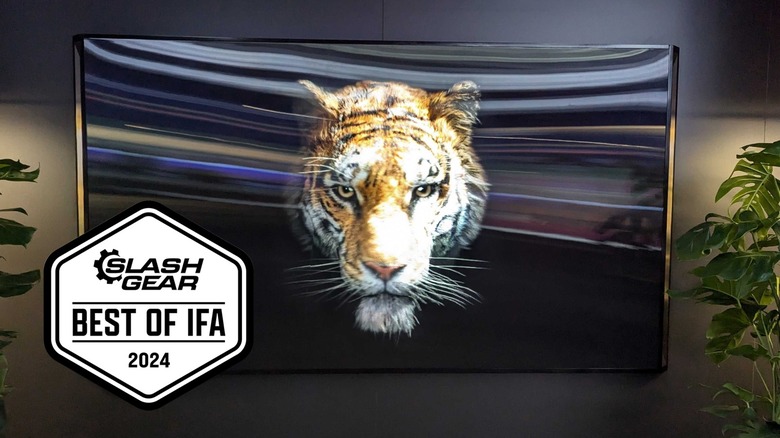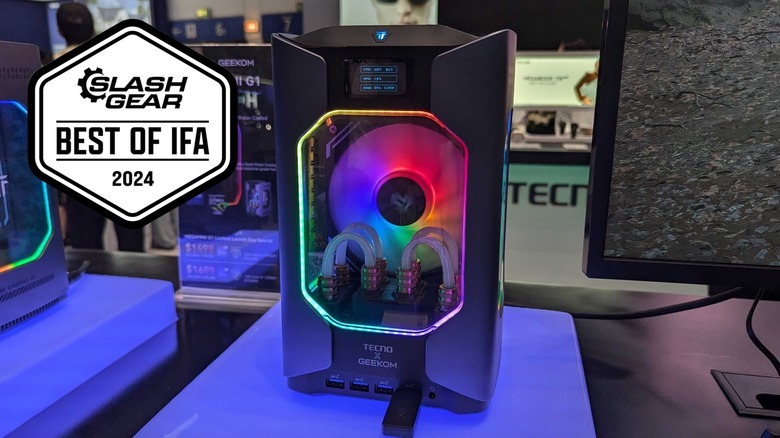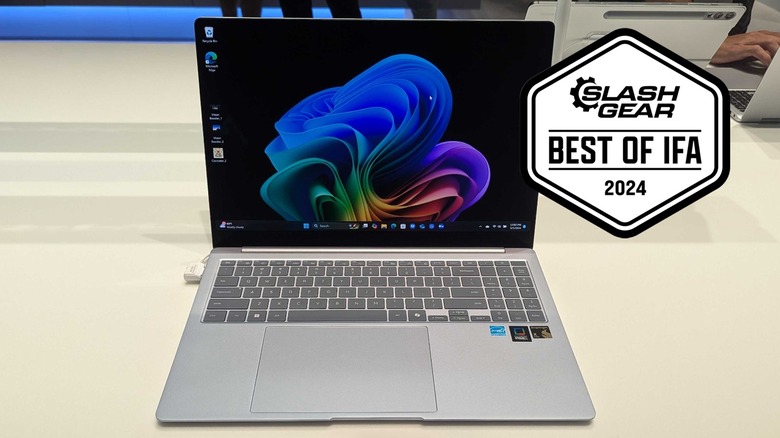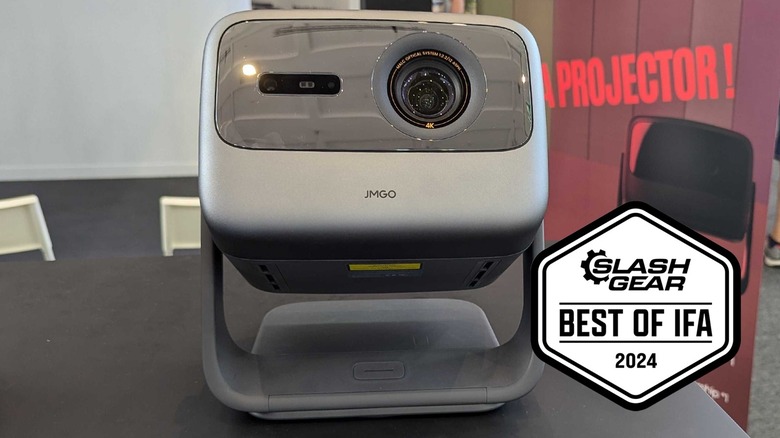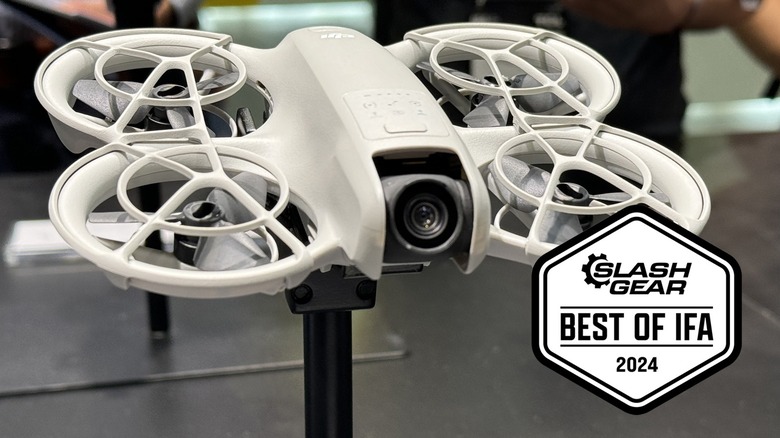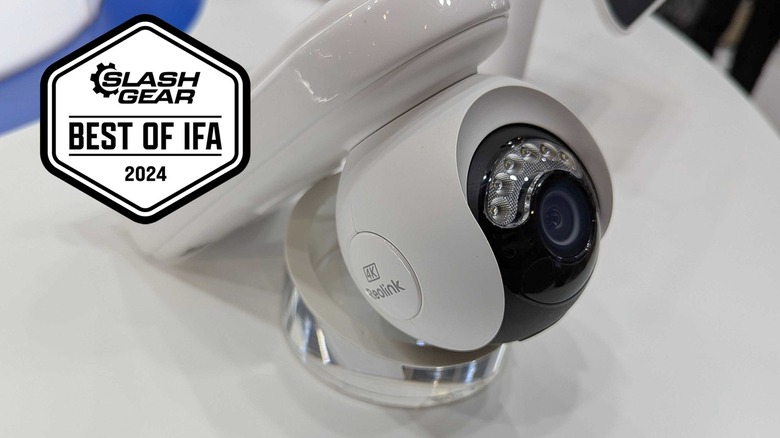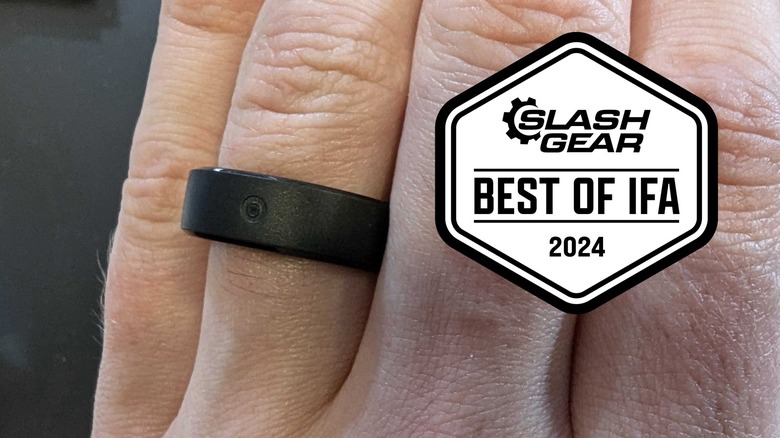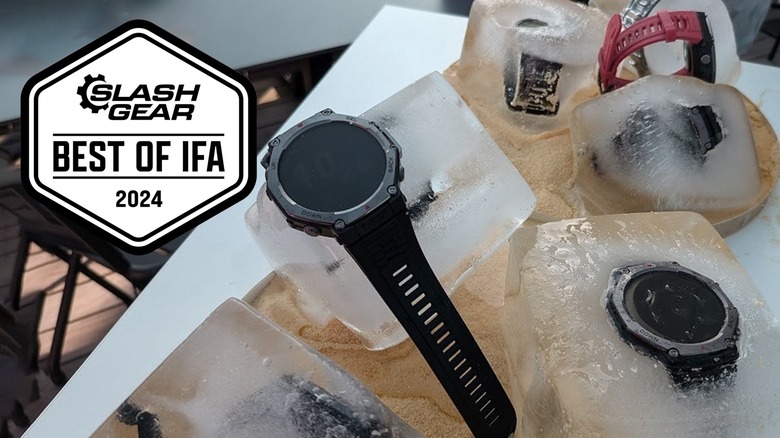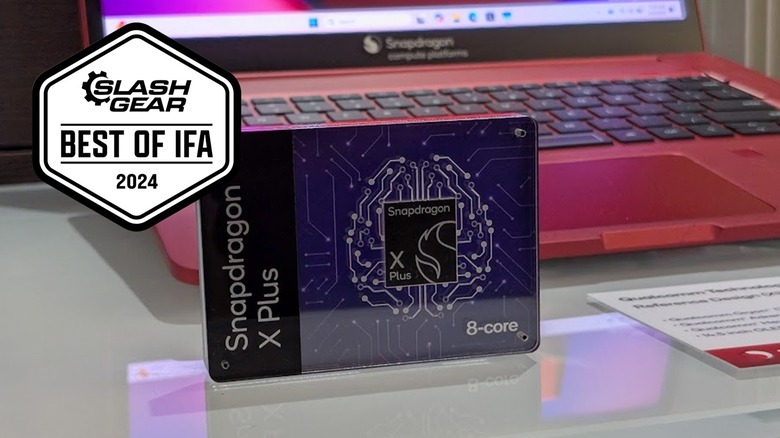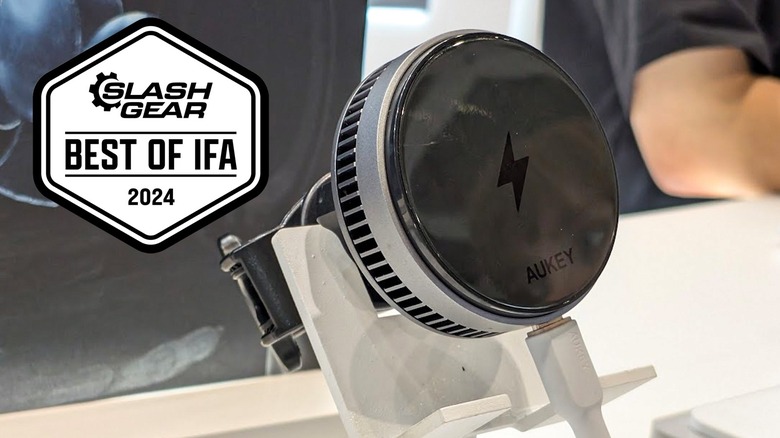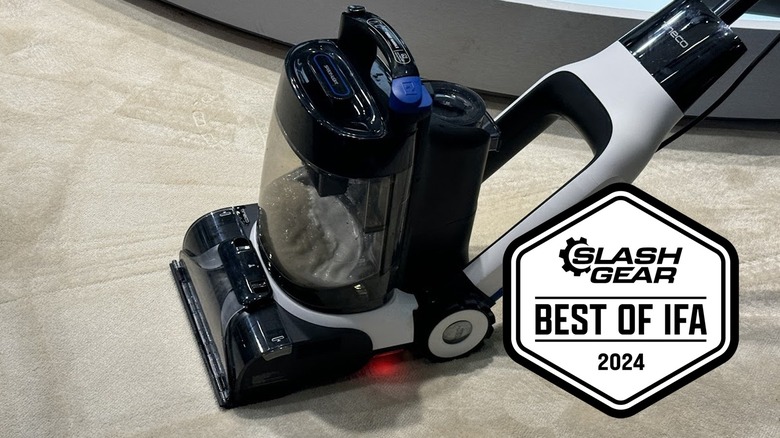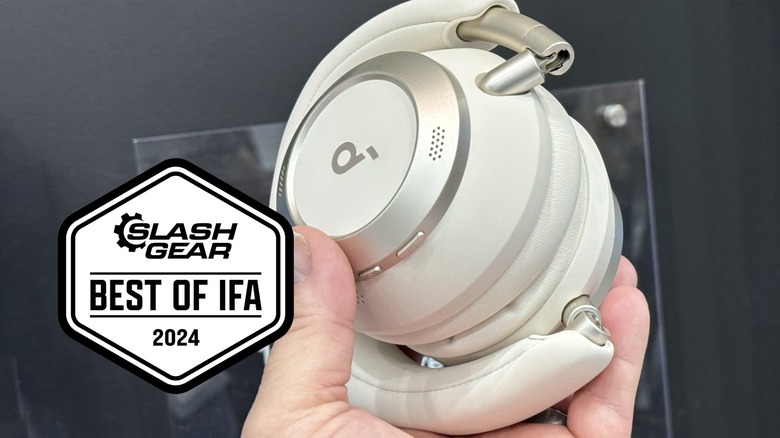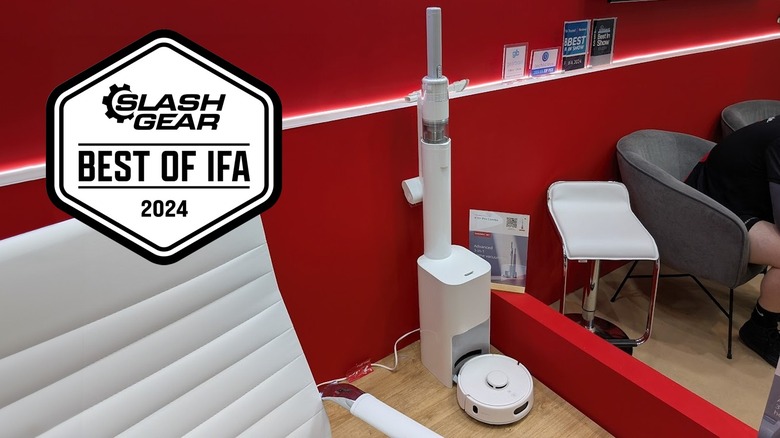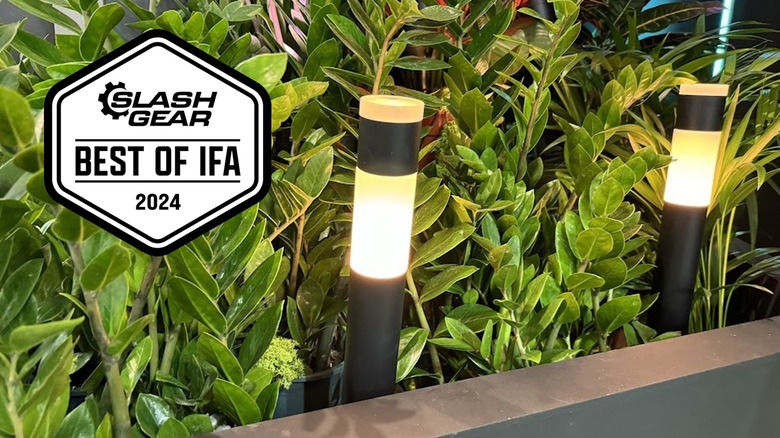SlashGear's Best Of IFA 2024
It's time again to drop in on Berlin to witness IFA on this, the event's 100th anniversary. As one of the biggest tech shows on the planet, IFA bears witness to all manner of electronics, home appliances, and everything in between. This year's event delivered plenty of vacuum cleaners, wearables, batteries, drones, smartphones, projectors, and plenty of cutting-edge laptops. Sorting through the masses of next-gen gadgets, we constructed a list of the best of the best!
We went up close and personal with the tech shown by brands presenting at the convention — new brands and established names included. SlashGear's Best Of IFA 2024 awards represent a wide variety of products, each of which has real potential to have a significant impact on your life in the very near future.
The following list includes entries from categories aplenty, including (but not limited to): Personal Computing, Smart Home Care, Robotics, Home Entertainment, Mobile Power, Drones, Smartphones, and more. Whether you're looking to stay powered up on the go, ramp up your smart home game, or you'd like to be followed around by a tiny robotic photographer — we've got you covered.
Honor Magic V3
The Honor Magic V3 was in many ways the standout phone of IFA 2024, and may be a contender for phone of the year. Class leading specs, a generous set of screen sizes, and some exceptional cameras help the phone stand out. It's also mind-blowingly light and incredibly durable. Honor's keynote included videos of the phone being thrown in a literal washing machine for 15 minutes (it's hearty) and being placed directly on top of the tallest tower of cards ever built in eight hours (it's light!)
We got more hands on with the Honor Magic V3 than we did with many of the other devices at IFA 2024, so we can directly vouch for the durability. Despite several weeks in a front pocket alongside other devices and being thrown into difficult situations, the screens remain completely scratch free. Though the dust proofing may be questionable as some sand really did get to places it shouldn't during an off-roading trip.
Honor MagicBook Art 14
While a lot of the focus went on Honor's flagship phone, the Chinese company also rolled out a ridiculously light and functional laptop. The MagicBook Art 14 feels like a direct shot at Apple. Honor itself boasts about how the device is slimmer and lighter than a MacBook, and that is very true. If you hold the two side by side the difference is very significant.
The notebook also forms the centerpiece of Honor's ecosystem, and is capable of interacting with both the tablet (also announced at IFA) and the Magic 3. You can turn all three into a three-monitor setup, and that may be the only way you can currently do such a thing while packing less than four pounds of equipment overall. Aside from some minor, and very objective, criticisms — the Honor MagicBook 14 is essentially flawless. Plenty of laptops were announced at IFA, but this may be the standout example in what is a very large and accomplished group.
Bluetti Handsfree 2
Portable power banks are useful in so many situations. Power outage? Some of them are capable of running your fridge. Garden party? You can run a projector, speakers, or a full blown Karaoke setup with one. Glamping? You can spend several days charging your devices with the right power station. The latter just got even easier thanks to the Bluetti Handsfree 2. The device is a portable power station (full-fat power plug included) that fits inside a backpack that Buetti sells with it. With 700 watts of output, and 512 watt hours of power, Bluetti's ultra-portable power station can keep the average camper going for a good while.
It has applications beyond camping too. The actual target-audience of the device includes drone operators and camera aficionados that work remotely It's still going to be pretty heavy, but its slimness means it can sit very close to your body and this will likely be the most portable power station in this capacity range on the market. There's also plenty of room left in the backpack it comes with — so you can pack lots of other equipment or camping supplies and won't have to take an additional satchel with you.
Lenovo's Aura Edition Smart Share
We may be close to the end of both the raw power and portability phase of laptops. As a couple of the other awards suggest, things are already very thin and powerful. Going any thinner would mean most ports have nowhere to go, and when you go under two pounds diminishing returns tend to set in rapidly.
So the next great battle for laptop supremacy will probably center around ecosystem and ease of use. At IFA 2024, Lenovo might have a head start here with their Aura laptops. The features include a variety of working modes that can be easily activated, but a standout trick involves photo transfer.
You'll need a phone capable of NFC connections (they pretty much all are these days), and said phone will need to be paired with the laptop in some way. But once those boxes are ticked, a simple tap of the phone to the side of the screen will immediately load the latest 40 photos in the phone's gallery to the larger device. As a group of people who constantly work on things that require photos, we can very much appreciate this one.
Dreame's stair climbing robot vacuum
If you're a robot vacuum owner who resents buying a model for each floor, carrying your robot up the stairs, and/or vacuuming said stairs yourself, your troubles are probably going to continue for a good while. But if you get frustrated at vacuums that can't clear a half inch high lip between your kitchen and dining room, your worries may end very soon.
At IFA 2024, Dreame demonstrated a robotic vacuum that can hop up and down gaps of up to about two-inches all day long. It also has a set of lasers that will tell it how big the drop is, so there's little to no danger of it misjudging a step and taking a very expensive tumble. The vacuum is currently a prototype, but it seems to work well and its features may end up present on high-end vacuums very soon. Given how the industry is, similar tech will likely skip across the brands a few months after that.
Hisense 3DTV Concept
Old-school 3DTVs failed horribly a few years back, and part of the reason for that is the silly glasses everyone had to wear if they wanted to see said 3DTV. Another reason was the rampant migraines said TVs would give a lot of people. Both of these problems may be solved with Hisense's 3DTV concept that allows you to view 3D images with your naked eye and not get a sore head. Sort of like you can in real life, but on a flat screen.
From what we can tell, it uses clever shading and high-end resolution to achieve the effect as opposed to multiple layered screens. Which is far easier on the eyes. Unfortunately, this is a concept TV so it's unlikely to be hanging on your living room wall at any point. Hisense instead sees it as something that may be marketed to institutions like museums and medical facilities.
Tecno Mega Mini Gaming G1
When gaming, it's often a tradeoff between portability and actual function. A high-end gaming laptop will sort of play games at high-ish settings while scorching whatever surface you're using on and inevitably dying on you after a hard few years. For the same price, you can get a Tecno X Geekom Mega Mini Gaming G1 which has a full blown NVidia RTX 4060 in it. This is more of a laptop version of a GPU, but the water cooling should make a huge difference to its performance.
It's also water cooled, so there's no chance of it combusting like a gaming laptop would. And although it isn't flat, it will comfortably fit inside a backpack. And from what we have gathered, it's around the same price as a gaming laptop. $1600-$1800 depending on the exact specs you want. You will need to add a portable monitor, keyboard, and mouse — but it's a small price to pay for full on PC gaming in transit.
Samsung Galaxy Book4 Edge 15 inch
New for IFA is the Samsung Galaxy Book4 Edge 15 inch, which as its name suggests is a 15-inch variant of Samsung's Galaxy Book 4 laptop. The device is slim, powerful, and geared to take advantage of Samsung's already impressive and continuously expanding AI offerings. With the 15.6-inch display, the South Korean company finally plugs the gap between its 14 and 16 inch Galaxy Book 4 models. It launched alongside a 360 degree folding laptop, though the Galaxy Book4 Edge 15's impressive specs, lightness, and razor thin form factor make it the standout product on Samsung's IFA release list.
In the slim and small package, you get a FHD display, Snapdragon's new X-Plus 8-core processor (also an award winner), 16 GB of RAM, a varying amount of storage depending on what you spend (up to 512 GB), and it's WiFi-7 capable. Even though it will likely be completely obsolete by the time WiFi 6 goes away. It also has a touchscreen, which is pretty nice.
JMGO N1S Ultimate
The JMGO N1S Ultimate is a high-end projector at a high-end price point but it nails one of the most important elements. It's outstandingly bright. With 3500 ANSI lumens, you can comfortably throw an image onto a surface outside during daylight hours. Even at the higher end of the scale, a shocking number of projectors don't have this capability.
This projector rolls with 4K image resolution and 110% BT.2020 color gamut to deliver a gigantic, sharp, colorful vision of Google TV and everything that comes with it. That includes Netflix, YouTube, Apple TV, Hulu, MAX, and more. For audio, you'll not need any external speakers as this device has a Hi-Fi built-in speaker system — with 45Hz low frequency bass to boot.
The key innovation on this piece of hardware is its built-in gimbal. This Projector Mount system allows simple adjustments with 135-degree vertical and 360-degree horizontal angles with autofocus and automatic keystone correction — up, down, and all around.
DJI Neo
DJI is finally coming after the last category it hadn't gone after yet — the selfie drone. Other drone companies have picked up that slack, but now DJI wants its slice of the pie, and it has quite the appetite. Put simply, the "selfie drone" is a flying camera whose only job is to take off, fly in a particular pattern, snapping photos or video along the way, and then come back and land in your hand.
The DJI Neo does exactly that with a 4K camera and about 18 minutes of flight time. It's extremely light and compact, though it doesn't fold up like some of its competitors do. Plus, you can go "full drone" with the Neo by turning your phone into a mini controller and flying the drone anywhere you want, so you're not even losing that functionality.
All this is coming for just $199 which is a ridiculously low price point for a drone with this much capability. Yes, flying cameras are fun, but what's keeping the bulk of the public out of the drone space is the need to actually fly them. DJI is removing that barrier, and the price barrier at the same time, and in doing so, it's taking no prisoners.
Reolink Altas PT Ultra
Reolink is one of the more popular home security camera companies that you can get today, and the Reolink Altas PT Ultra camera brings a lot to table. The Altas PT Ultra is a battery=powered 360-degree camera with continuous 4K recording and full color night vision, which is just about all you can ask for in a security camera.
The fact that the ReoLink Altas PT Ultra is battery powered (with a 20,000 mAh battery) is a great feature because it gives you even more freedom for what you want to record. You don't have to be tied to a single spot that happens to be near power.
The full color night vision is another good quality. Infrared night vision is fine for black and white images, but you could miss some defining characteristics or detail using that kind of night vision. The Reolink uses an F/1.0 aperture and 1/1.8" sensor to increase light collection, giving you full color night vision. When enclosed in a completely black box on the show floor, you could still make out a lot of detail in the subjects. The footage is grainy, to be sure, but the fact that you can see anything at all is remarkable.
RingConn Gen 2
We first learned about Ringconn earlier this year, when I took the Gen 1 device for a spin. I've reviewed several smart rings since then and I keep going back to the Ringconn every time. It has the best balance of features for what it offers. Now, RingConn has a Gen 2 device with even more features and a lot more going for it. In less than a year, RingConn has made the ring thinner, lighter, and longer lasting, but that's not what really makes it stand out.
RingConn added sleep apnea detection to the ring, which has been something of a popular topic this year. Samsung and Apple both added it to their watch offerings, but this is a first for a smart ring. Sleep apnea is a disturbance in your sleep that can cause you to temporarily stop breathing for a short time. Over time, this can cause any number of health maladies, so it's important to diagnose and treat it as soon as possible, and RingConn hopes to help with that. Overall, RingConn made a ton of improvements in its second-generation ring, and we're here for it.
Amazfit T-Rex 3
Amazfit is a wearable tech company that has always provided low-cost wearables to the market — specifically smart watches. At IFA, Amazfit unveiled the T-Rex 3, which is an ultra-rugged smartwatch designed for adventure off the grid. There are two things that make the T-Rex 3 stand out.
First, Amazfit partnered with Hyrox, which is the fastest growing fitness challenge in the world (and in an IFA-related twist, is of German origins). The watch can help you power through your Hyrox workouts and help you recover more quickly with all the needed relevant data. For those involved in the sport, it's great to have a watch ecosystem dedicated to working with you.
Plus, this watch has a pretty remarkable 27-day battery life, and according to Zepp, up to 180 hours of continuous GPS usage. Of course, we haven't had any way to test those claims as of yet, since the watch just came out, but if that claim is even 75% true, that's one heck of a battery life to bring to the table. That being said, the watch is a bit of a chonker, so those with dainty wrists might want to go in a different direction.
Qualcomm Snapdragon X Plus
Windows on ARM has been a thing for a long time, but until Qualcomm came along it wasn't really ... what's the word I'm looking for? Oh right, "good". Windows on ARM wasn't good. That has very much changed with the introduction of the Snapdragon X Elite processors from Qualcomm, and now the chip maker has released a new version of the chip called the Snapdragon X Plus.
This is more of a midrange offering for the product line which is designed less for power and more for efficiency. That's code for, "this chip won't be as fast as the Snapdragon X Elite" but that's ok. I've been testing an ASUS laptop this past week running the Snapdragon X Plus processor and it has been great for writing and research and a battery champion as well.
This new processor rounds out Snapdragon's offerings in the space and opens the door for more budget friendly options. Right now, that's key because Windows on ARM is having something of a renaissance, and this will definitely help by making Windows on Arm even more accessible.
Aukey MagFusion Dash Pro
One of the biggest challenges with wireless charging and therefore MagSafe charging is heat. Physics tells us that it's much harder to send energy through air than it is through copper. So, when you're wirelessly charging your phone, it makes your phone as a whole warmer, which is also not especially great for your battery nor the other electrical components in your phone.
Aukey's MagFusion Dash Pro seeks to alleviate that concern with its Omnia-Frez cooling system which is designed to help dissipate heat caused by wirelessly charging, leading to a healthier phone and battery. Of particular interest to me is the vent-mounted charger which gets heat not only from wireless charging, but also from the sun during the summer, and the heat vents during the winter. I'm hopeful that this vent mount can help combat those issues as well, but of course I'll have to wait until winter hits Chicago to test that out. In the meantime, this charger will help your phone stay healthy by combating the physics of wireless charging.
Tineco Carpet One Cruiser
Carpet cleaning can be a real chore in your home. Not only do you have to completely vacate the room while you do it, but it can take an extremely long time for the carpets to dry afterward. Plus, carpet cleaners are heavy and bulky to move around. When it comes to spot cleaning, you have the same issue. But Tineco has a solution to that in the Carpet One Cruiser. The cruiser has a nifty three-level power movement capability, meaning you can move the cleaner in any direction with motor assist.
Plus, the carpet cleaner has a 167-degree power dry feature which will help reduce the time your carpet takes to dry on its own from 24 hours down to potentially two hours or less. Not only does it make getting back into your room quicker, but it also reduces the chance of mold and mildew forming in the meantime.
Finally, the base station for the carpet cleaner add self-cleaning functionality that rids the inside of the machine of the gross water left behind after cleaning up a mess. This is a one-stop solution for your carpeted home.
Soundcore Space One Pro
Anker's sub-brand Soundcore is known for midrange audio products that sound good while remaining affordable. The Soundcore Space One Pro headphones are the company's latest flagship headphones and, based on what I could hear on the busy floor of a trade show, they sound really good and the ANC is very good as well. Don't get me wrong, it's hard to determine how good a set of headphones is based on a short demo in a tradeshow booth, but all signs point to these being something special.
Additionally, these headphones fold up to be very small, with the earcups facing each other. Soundcore sells a case to tote these around for another $30, which is a little on the not cool side, but as someone who travels fairly frequently, I can appreciate how small these get. If the sound and ANC are half as good as they seemed from my demo, then $199 is a perfect price for them.
Switchbot K10+ Combo
I'm a sucker for tools that have multiple functions, and I'm also a fan of multiple tools all being in the same space, and that's what Switchbot has in the K10+ Combo. This base station has a tiny little robot vacuum and a stick vacuum both in one. The this function comes with the fact that both of those devices are self-emptying.
When the floor vacuum returns to the base to charge and when you hang up the stick vacuum, the base station empties both devices. Switch bot envisions this is going to be popular in situations where space is at a premium. Having the little vacuum bot and stick vacuum in one place means fewer items taking up space elsewhere.
Both devices empty into a bag that can be disposed of when full. Three bags come with the device initially, and you will need to order more from Switchbot when you run out — there is no standard size to these kinds of bags. As Kodak says, "it's not the camera; it's the film" All the same, Switch bot says you won't need too many bags throughout the year, so ordering more shouldn't be too much of a hassle. We'll see, but for now, we dig it.
Eufy Outdoor Pathway Lights E10
One of the traits of a truly smart home is when all of its components work together. When you unlock your front door, your alarm disables, and your living room lights turn on — that kind of thing. Tragically, you don't see that very often today. Eufy is building an ecosystem where this can work, and that's very obvious in the Outdoor Pathway Lights E10.
On their own, there are permanent pathway lights that can be programmed in the app to turn on and off when needed, change colors, etc. But the real magic comes when you have a Eufy security camera as well. Then, using the security camera, you can program the lights to react when someone is approaching the house. If the camera recognizes someone it knows, the lights can turn green (or whatever), but if the camera doesn't recognize the person, it can change the colors to red and turn on very bright to let them know they're not welcome.
This is just one example of how Eufy's facial recognition can work along with these lights, and that's exciting to see. It still all has to be within the Eufy family, which is not ideal — you'd like to be able to pick your own camera to work with them, but it's also understandable. Here's hoping true smart homes will be more open in the future. But for now, this will do.

